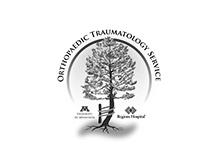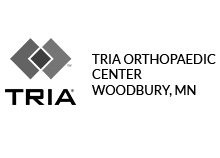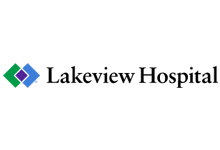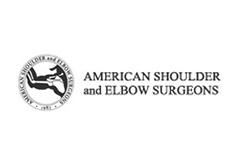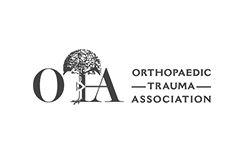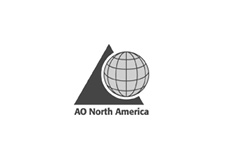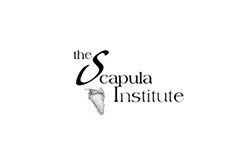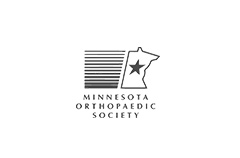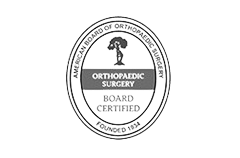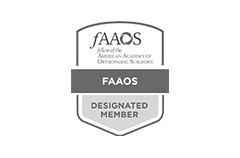Golfers Elbow
- Diagnosis
- Non-operative Options
- Operative Options
- Before Your Surgery
- After Your Surgery
- Your Rehab
What is Golfer’s Elbow?
Golfer’s elbow, also called medial epicondylitis, is a painful condition occurring from repeated muscle contractions in the forearm that leads to inflammation and microtears in the tendons that attach to the medial epicondyle. The medial epicondyle is the bony prominence that is felt on the inside of the elbow.
Golfer’s elbow and tennis elbow are similar, except that golfer’s elbow occurs on the inside of the elbow and tennis elbow occurs on the outside of the elbow. Both conditions are a type of tendonitis, which literally means “inflammation of the tendons”.
Signs and Symptoms of Golfer’s Elbow
Signs and symptoms of golfer’s elbow can include the following:
- Elbow pain that appears suddenly or gradually
- Achy pain to the inner side of the elbow during activity
- Elbow stiffness with decreased range of motion
- Pain that radiates to the inner forearm, hand or wrist
- Weakened grip
- Pain worsens with gripping objects
- Pain is exacerbated in the elbow when the wrist is flexed or bent forward toward the forearm
Causes of Golfer’s Elbow
Golfer’s elbow is usually caused by overuse of the forearm muscles and tendons that control wrist and finger movement, but may also be caused by direct trauma such as with a fall, car accident or work injury.
Golfer’s elbow is commonly seen in golfers; hence the name, especially when poor technique or unsuitable equipment is used when hitting the ball. Other common causes include any activity that requires repetitive motion of the forearm such as: painting, hammering, typing, raking, pitching sports, gardening, shoveling, fencing and playing golf.
Diagnosis of Golfer’s Elbow
Your doctor will review your medical history and perform a thorough physical examination of your elbow joint. Your physician may order an X-ray to rule out a fracture or arthritis as the cause of your pain. Occasionally, if the diagnosis is unclear, further tests such as MRI, ultrasonography and injection test may be ordered to confirm golfer’s elbow.

Your physician will recommend conservative treatment options to treat the symptoms associated with golfer’s elbow. These may include the following:
- Activity restrictions: Limit the use and rest your arm from activities that worsen symptoms.
- Orthotics: Splints or braces may be ordered to decrease stress on the injured tissues.
- Ice: Ice packs applied to the injury will help reduce swelling and pain. Ice should be applied over a towel to the affected area for 20 minutes, four times a day for a couple of days. Never place ice directly over the skin.
- Medications: Anti-inflammatory medications and/or steroid injections may be ordered to treat the pain and swelling.
- Occupational therapy: OT may be ordered for strengthening and stretching exercises to the forearm, once your symptoms have decreased.
- Pulsed ultrasound: This is a treatment used by therapists to break up scar tissue and increase blood flow to the injured tendons to promote healing.
- Professional instruction: Consulting a sports professional to assess and instruct in proper swing technique and appropriate equipment may be recommended to prevent recurrence.
- Download Dr Myeroff's Post-Op Protocol for Medial Epicondylitis (Golfer’s Elbow)
If conservative treatment options fail to resolve the condition and symptoms persist for 6 -12 months, your surgeon may recommend surgery to treat golfer’s elbow. The goal of surgery is to remove the diseased tissue around the inner elbow, improve blood supply to the area to promote healing, and alleviate the symptoms.
The surgery is performed in an operating room under regional or general anesthesia and is usually done as a day surgery. Your surgeon will make an incision over the medial epicondyle area.
Soft tissues are moved aside for the surgeon to view where the tendon meets the medial epicondyle. The surgeon will then cut the tendon and remove any scar tissue that is present. This is called Debridement of the tendon. If bone spurs are present on the medial epicondyle, these will be removed with special instruments.
The tendon is then reattached to the bone with special sutures. The incision is then closed and covered with a dressing.
Risks and Complications
The majority of patients suffer no complications following Golfer’s Elbow surgery, however, complications can occur following elbow surgery and include:
- Excessive elbow stiffness
- Infection
- Nerve damage
- Hematoma
- Incision breakdown
- Symptoms recur
- Compartment syndrome-excessive swelling at the operative site

Once you and your doctor decide that surgery will help you, you will need to learn what to expect from the surgery and how to actively participate in the treatment plan for the best results afterward.
Preparing mentally and physically for surgery is an important step toward a successful result. Understanding the process, and your role in it, will help you recover more quickly and have fewer problems.
Before surgery, your doctor will perform a complete physical examination to make sure you don’t have any conditions that could interfere with the surgery or the outcomes.
- Routine tests, such as blood tests and X-rays may be performed.
- Discuss any medications you are taking with your doctor as you may have to stop or alter your intake before surgery. If you are taking aspirin or anti-inflammatory medications or any drugs that increase the risk of bleeding, you will need to stop taking them one week before surgery to minimize bleeding.
- Discuss with your doctor about preparing for potential blood replacement, medical interventions and other treatments prior to surgery.
- Report any infections to your surgeon. Surgery cannot be performed until all infections have cleared up.
- If you smoke, you should stop or cut down as smoking interferes with wound healing and can affect your recovery.
- Have someone available to take you home, as driving is not recommended for at least 24 hours or as advised.
- You may need help with everyday tasks such as cooking, shopping and laundry.
- Put items that you use often within easy reach, so you won’t have to stretch and bend as often.
- After Surgery Video
- Elbow Surgery Recovery Video
- Elbow Elevation Technique Video
After surgery, your surgeon will give you instructions to follow depending on the type of repair performed and the surgeon’s preference. Common post-operative instructions include:
- A sling, cast, or splint is placed after surgery to keep the elbow immobilized.
- Elevate the elbow on pillows above the level of the heart to reduce swelling.
- Flex and open your hand to help reduce swelling.
- Apply ice packs to the area to help reduce swelling.
- Keep the incision area clean and dry. You may shower once the dressings are removed unless otherwise directed by your surgeon. If the arm is in a cast, cover the cast with plastic bags and tape to your skin above the cast to keep it dry when bathing.
- You will be given specific instructions regarding activity limitations.
Want to know more?
- Physical Therapy Intro Video
- Finger ROM Video
- Standard Elbow ROM Video
Physical therapy is usually ordered to restore elbow function and strength. It is imperative that you follow your exercise plan to improve motion and strength in the elbow.
Want to know more?
- Download Dr. Myeroff's Elbow Elevation Technique Information Sheet
- Download Dr. Myeroff's Standard Elbow ROM Diagram Information Sheet
- Download Dr. Myeroff's Finger ROM Diagram Information Sheet
- Download Dr Myeroff's Post-Op Protocol for Medial Epicondylitis (Golfer’s Elbow)
- Download Dr Myeroff's Post-Op Protocol for Medial Epicondylitis (Golfer’s Elbow) – Operative







